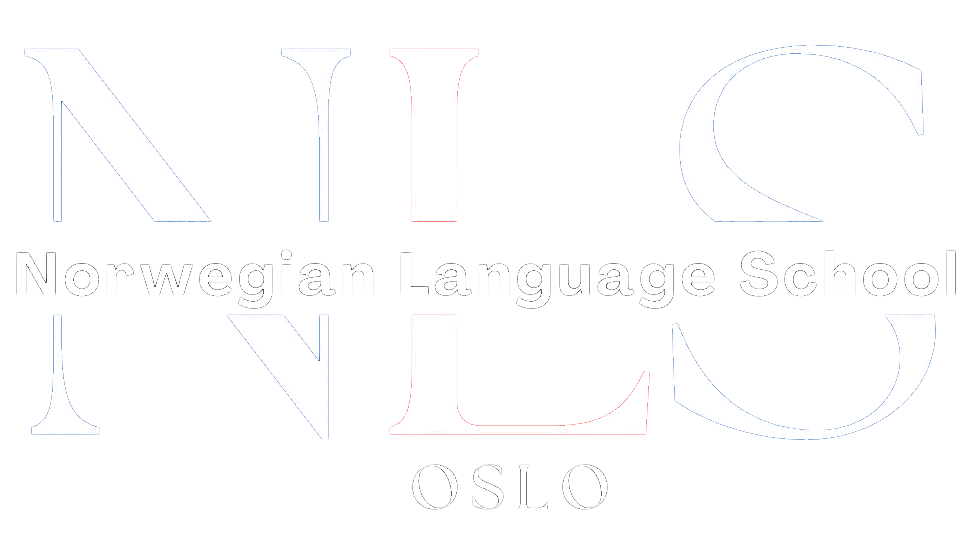
Exploring Mythical Norse Creatures & Their Lore
Have you ever wondered about the fascinating world of Norse mythology creatures? From mighty serpents to enigmatic warrior maidens, the Norse pantheon is teeming with mythical beings that have captivated the imaginations of people for centuries.
In this article, we dive deep into the realm of Norse mythology creatures. We will unveil the secrets behind their origins, unravel their iconic tales, and shed light on their significance in ancient Norse culture.
So, are you ready to embark on an epic journey through the realms of mythical Norse creatures? Let’s begin our exploration!
Table of Contents
ToggleKey Takeaways:
- Mythical Norse creatures play a crucial role in Norse mythology and offer insights into ancient Norse culture.
- Explore the legend of Jormungandr, the gigantic serpent of Midgard.
- Discover the mysterious Valkyries and their role as the choosers of fallen warriors.
- Delve into the tales of Fenrir, the fearsome wolf destined to bring about Ragnarok.
- Uncover the mischievous deeds and shape-shifting abilities of the trickster god Loki.
The Mighty Jormungandr: The Serpent of Midgard
Norse mythology is brimming with awe-inspiring creatures, and one of the most renowned among them is the mighty Jormungandr, the colossal serpent that dwells in the depths of the ocean encircling Midgard, the realm of humans. With its origins deeply rooted in Norse cosmology, Jormungandr stands as a formidable figure in ancient Norse legends.
According to Norse lore, Jormungandr is one of the three children of the trickster god Loki and the giantess Angrboda. This monstrous serpent is fated to play a significant role in the cataclysmic event known as Ragnarok, during which it will battle against the gods themselves, including the mighty Thor.
Described as an ancient Norse creature of immense size and power, Jormungandr is often depicted as a serpent with a length so vast that it encircles the entire world, grasping its own tail in a symbolic representation of the eternal cycle of life and death. This portrayal highlights the creature’s connection to the fundamental forces governing the cosmos in Norse mythology.
Legend has it that Jormungandr’s presence alone creates tumultuous sea storms, and its venomous breath poisons the waters, leading to treacherous and unpredictable sailing conditions. This destructive power adds to the mystique surrounding this awe-inspiring beast.
In Norse mythology, Jormungandr’s battles with Thor are of particular significance. The god of thunder has clashed with the immense serpent multiple times, with each encounter leaving a lasting impact on both characters. The tales of their epic confrontations are a testament to the breadth and depth of Norse mythology’s rich tapestry of legends.
“Jormungandr, the massive serpent coiled beneath the ocean’s surface, represents the primal forces of chaos and destruction. Its impending clash with Thor in the final battle of Ragnarok symbolizes the cosmic struggle between order and chaos.”
To illustrate the impact of Jormungandr’s battles, let’s take a closer look at the fierce clashes between the serpent and Thor:
| Jormungandr | Thor |
|---|---|
| Immense size and power | God of thunder and strength |
| Venomous breath and destructive sea storms | Mjolnir, the mighty hammer |
| Symbolizes chaos and destruction | Embodies order and protection |
| Central figure in the prophecy of Ragnarok | Destined to battle Jormungandr |
These battles between Jormungandr and Thor epitomize the constant struggle between opposing forces in Norse mythology, a theme that captivates and enthralls readers to this day. The conflicts underscore the complexity of the characters and their roles in shaping the fate of the Norse cosmos.
Valkyries: The Enigmatic Maidens of Valhalla
The Valkyries are mythical Norse creatures revered in Norse folklore and mythology. These warrior maidens, also known as “choosers of the slain,” hold a significant role in Norse cosmology and the afterlife. The word “Valkyrie” itself means “chooser of the slain” or “those who decide the fate of battle.”
Described as beautiful, fierce, and enigmatic, the Valkyries are believed to have the ability to fly and possess immense strength and skill in combat. They are often depicted with winged helmets and bearing spears, ready to guide fallen warriors to the grand hall of Valhalla, the realm of heroes.
The selection process of the Valkyries is shrouded in mystery. They are said to roam the battlefields, observing the worthy and fallen heroes. The chosen warriors, handpicked by the Valkyries, are then escorted to Valhalla, where they spend eternity feasting and preparing for the final battle of Ragnarok.
The Valkyries’ connection to Valhalla and their vital role in selecting the fallen reflect the Norse belief in honor, bravery, and the warrior’s pursuit of glory. They embody the idea that only the bravest and most valiant heroes are worthy of eternal reward in the legendary realm of Valhalla.
Beyond their role as guides to Valhalla, the Valkyries are also known to intervene in mortal affairs. According to Norse mythology, they can choose champions and influence the outcome of battles, favoring those who display exceptional valor and skill on the battlefield.
The enigmatic nature of the Valkyries has captivated storytellers, artists, and scholars for centuries. Their mythical existence symbolizes courage, heroism, and the eternal quest for glory, making them enduring figures in Norse mythology.
“The Valkyries, with their radiant beauty and fearsome strength, stand as a testament to the honor and glory sought by Norse warriors in life and beyond.”
Sample List of Valkyries in Norse Mythology:
- Brynhildr
- Göndul
- Gunnr
- Hildr
- Kára
- Mist/li>
- Ráðgríðr
- Sigrdrífa
- Sigrún
Attributes of Valkyries
| Appearance | Abilities | Role |
|---|---|---|
| Beautiful, fierce | Flight, combat prowess | Choosing fallen warriors, guiding them to Valhalla |
Fenrir: The Fearsome Wolf of Ragnarok
In Norse mythology, Fenrir is a legendary creature depicted as a monstrous wolf with immense power and ferocity. According to prophecies, Fenrir is destined to play a significant role in the apocalyptic event known as Ragnarok.
“Fenrir, the massive wolf, shall break free from his bonds and unleash chaos upon the world. With his razor-sharp teeth and unstoppable strength, he will engage in a cataclysmic battle against the gods.”
Fenrir is not just a simple wolf, but a creature of immense strength and cunning. He is the son of the trickster god Loki and the giantess Angrboda. With his fearsome presence, Fenrir strikes fear into the hearts of gods and mortals alike.
In Norse mythology, Fenrir’s encounter with the gods is highlighted by a cunningly devised plan. Knowing about the dire fate that awaits him, the gods decided to bound Fenrir and keep him under control. They presented him with three unbreakable fetters, but Fenrir easily broke through each one.
It was not until the gods forged a special chain called Gleipnir that they were able to successfully bind Fenrir. This unyielding chain was made from seemingly innocuous materials like the sound of a cat’s footsteps, the roots of a mountain, the beard of a woman, and the spittle of a bird.
“Bound by the celestial chain Gleipnir, Fenrir lies in wait, growing larger and more powerful, until the time of Ragnarok approaches. When that fateful day arrives, Fenrir will break free and unleash his wrath upon the world.”
The legends surrounding Fenrir serve as a chilling reminder of the impending doom that awaits during Ragnarok. His ominous presence and untamed fury symbolize the destructive forces that will shape the final battle between gods and giants.
The Mischievous Loki: Trickster and Shapeshifter
In Norse mythology, Loki is renowned as the mischievous trickster god who constantly thrives on chaos. His unpredictable nature and shape-shifting abilities make him one of the most intriguing mythical Norse creatures.
Loki’s reputation as a troublemaker stems from his penchant for playing pranks on both gods and mortals. He is known for his cunning nature, often manipulating situations to suit his own desires. Despite his mischievous tendencies, Loki occasionally assists the gods with his intelligence and ingenuity.
“Loki, the trickster, plays a vital role in Norse myths and legends. He challenges the conventions and restrictions imposed by the gods, serving as a catalyst for change and transformation.”
One of Loki’s most notable attributes is his shape-shifting ability, which allows him to assume different forms. This unique power enables him to escape difficult situations and deceive others. Loki’s transformations range from animals such as a wolf or a fly to even turning into a woman, showcasing his versatility.
While Loki’s actions often result in chaos and conflict, they are essential to the Norse mythological narratives. He plays a pivotal role in the events leading up to Ragnarok, the apocalyptic clash between the gods and giants. Loki’s treachery and betrayal manifested in his role in the death of Baldur, the beloved god of light, which ultimately sparks the catastrophic events of Ragnarok.
The Mischief of Loki:
- Loki’s trickery leads to the theft of Thor’s hammer, Mjolnir, by the giant Thrym.
- He orchestrates the death of the noble god Baldur through a conspiracy involving mistletoe.
- Loki’s actions ultimately culminate in triggering the chaos and destruction of Ragnarok.
Loki’s complex personality and actions have made him an enduring figure in Norse mythology. His mischievous and unpredictable nature add depth and intrigue to the mythological tales, highlighting the complexities of human and divine interactions.
The Majestic Sleipnir: Odin’s Eight-Legged Steed
One of the most fascinating creatures in Norse mythology is Sleipnir, the extraordinary eight-legged horse ridden by Odin, the chief Norse god. With its unique appearance and legendary background, Sleipnir holds a significant place in Norse folklore and mythology.
Sleipnir’s origins trace back to an intriguing tale. According to Norse mythology, Loki, the cunning trickster god, transformed into a mare to distract a giant’s stallion. In this form, Loki became the mother of Sleipnir, who possessed eight legs – a characteristic that sets Sleipnir apart from ordinary horses.
Sleipnir’s eight legs granted it exceptional speed and agility, enabling it to traverse various realms and undertake epic journeys alongside Odin.
The association between Sleipnir and Odin is of immense significance. As the ruler of Asgard, Odin relied on Sleipnir’s tremendous speed and endurance to undertake his mighty quests and gather knowledge from the nine realms of Norse cosmology.
Sleipnir’s connections to other mythical beings and creatures further highlight its importance. In Norse mythology, Sleipnir is often depicted as a steed for the Valkyries, the enigmatic maidens who select fallen warriors to be taken to Valhalla, the great hall of the honored dead.
Sleipnir’s Symbolism and Representations
Sleipnir’s eight legs have become a powerful symbol in Norse mythology and have been interpreted in various ways. Some scholars believe that the eight legs represent the cardinal directions, allowing Sleipnir to traverse the entire cosmos.
Additionally, Sleipnir’s eight legs may symbolize swiftness and the ability to move between different realms effortlessly. This symbolism aligns with Odin’s role as a god of wisdom and knowledge, who seeks understanding from all corners of existence.
To showcase the unique characteristics of Sleipnir and its significance in Norse mythology, we present the following table:
| Characteristics | Symbolism |
|---|---|
| Eight legs | Swiftness, ability to traverse the cosmos |
| Odin’s steed | Endurance, power, wisdom |
| Associations with Valkyries | Connection between the realms of the living and the afterlife |
This table highlights the key characteristics and symbolism associated with Sleipnir, further enhancing our understanding of its importance in Norse mythology and its enduring legacy.
Conclusion
After delving into the fascinating world of mythical Norse creatures, it is clear that Norse mythology offers a vast array of captivating beings and tales. From the mighty Jormungandr to the enigmatic Valkyries, these creatures have captured our imagination for centuries.
The enduring fascination with Norse mythology can be attributed to the rich tapestry of characters it encompasses. Each creature has its unique role, characteristics, and significance in Norse cosmology and legends.
Exploring the myths and legends surrounding mythical Norse creatures not only provides entertainment but also offers valuable insights into the culture, beliefs, and values of ancient Norse societies. It sheds light on the intricate web of gods, heroes, and monsters that shaped their worldview.
FAQ
What are mythical Norse creatures?
What are some examples of Norse mythology creatures?
What are the characteristics of Norse mythical beings?
Are Norse mythological creatures based on real animals?
Where can I find more information about Norse creatures?

Norwegian A1-A2
Course Overview The Norwegian A1-A2 course is an online program focused on teaching essential Norwegian grammar and vocabulary. It includes a variety of materials and topics, with opportunities to interact with a Norwegian teacher entirely online. Curriculum Highlights The course covers key areas such as grammar and vocabulary and topics such as family, daily life, education, work, traditions, and leisure activities. Who Should Enroll? This course is perfect for beginners or those at the A1 or A2 levels who want to improve their Norwegian skills. What You Get Access to the full Norwegian A1-A2 course. A monthly 1-hour online conversation with a teacher. Many written and oral assignments. Comprehensive information on Norwegian grammar, Norwegian vocabulary and how to use them, important sentence structures, etc. Tips on additional resources to further enhance your Norwegian learning.
0 students enrolled
Last updated Dec 10th, 2024
If you want to learn Norwegian, you can register for classes here. We look forward to hearing from you and helping you become fluent in Norwegian.





